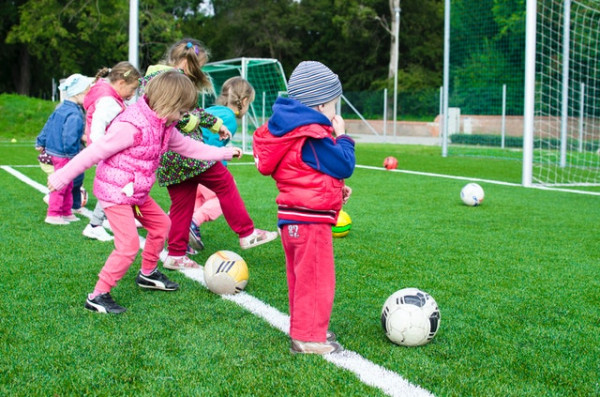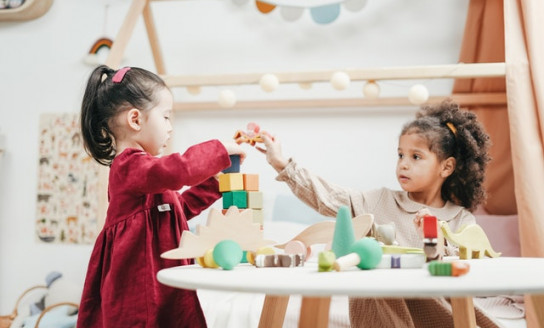Why play is important
Playing is how preschoolers learn and experiment – it’s essential for their overall development and wellbeing. Luckily, play is something pre-schoolers love, and they’ll take every opportunity you give them to have some fun with you and with other children. They like all sorts of indoor play, and physical activity – indoor or outdoor – is really important for their learning, health and wellbeing.
Play helps them:
- develop social skills
- express their feelings and practise managing them
- develop language and communication skills
- work out problems and experiment with solutions
- re-enact experiences that help them understand and express their
- feelings
- learn about caring for others
- build confidence
- build physical skills
- feel happy and safe.
Kinds of play
Tamariki all like doing different things, but generally toddlers and pre-schoolers enjoy:
- pretend play – dressing up and/or acting out scenarios, trying different roles and exploring and expressing their emotions
- board games like snakes and ladders, helping them learn about taking turns, counting, and following the rules. Some may find this challenging!
- silly rhymes, riddles, books and songs, helping grow their vocabulary and making them laugh!
- sorting games, like sorting buttons, blocks or other toys into size/shape/colour help build basic numeracy and maths skills
- messy play
- rough and tumble play – as long as it’s fun and isn’t hurting anyone physically or emotionally. Teach your child that when someone says stop, they need to stop
- physical play.
All tamariki are different, and all develop at their own pace. If you’re worried about any aspect of your child’s development, it’s a good idea to talk with your Plunket nurse or GP, your child’s early childhood teacher or educator.
Physical activity
Toddlers and pre-schoolers should be physically active for at least three hours every day, spread across the whole day. This doesn’t mean they need to be running around like a mad thing for three hours – it can range from jumping and running to simple activities like putting things away, helping with grocery shopping, or taking the dog for a walk. Give them plenty of time just to run around and play.
It can be as simple as doing things like:
- chasing bubbles
- collecting shells at the beach
- playing with balls – catching, hitting, bouncing, chasing, and kicking. You can even use rolled-up socks if you’re stuck inside on a rainy day!
- jumping over puddles or cracks in the footpath
- dancing
- pushing around a toy lawnmower
- teaching your child to ride a trike or scooter
- walking to the library.
Organised sport
If your child is interested in playing organised sport, there are lots of options for pre-schoolers, including modified junior football, gymnastics, rugby, dance, and swimming. These programmes are normally designed to introduce children to structured sports, helping them to develop their physical and social skills. With most of these activities, it’s not about winning or losing, it’s about being there, being active, trying hard, and having fun playing.
Go along and watch other kids playing. If they’re having fun, it’s probably a good programme.

Screen time
Our tamariki are surrounded by rapidly changing technology. In 1970 children started watching TV at around four years old, and now many children are watching screens – TVs, computers, tablets, and smartphones – from four months old, or even younger.
But children need certain things to develop in healthy ways.
- Children need loving, interested adults interacting with them and involving them in their day.
- They need physical activity, and social and play time with friends and whānau.
- They also need quiet time – they don’t need to be busy and entertained all the time.
Tamariki learn through relationships and experiences. When their relationships are positive (if imperfect) and their experiences are rich and interesting, they’re laying strong foundations for many different areas of their development. Rich and interesting experiences can be as simple as holding your hand while watching the wind blow in the trees, helping in the kitchen, or splashing in a puddle – these experiences all involve the senses and involve the body in the three-dimensional world.
Two-dimensional screens don’t offer the same sensory experience as human interaction.
The Ministry of Health and the World Health Organisation recommend:
- children younger than two years shouldn't spend time in front of screens
- less than an hour each day for tamariki aged between two and five years.
How screens can affect children
- Poorer sleep: technology use can impact babies and young children through poorer quality and quantity of sleep, especially if screens are used before bed. If daytime viewing increases, children sleep less at night too.
- Language delay: studies have found the longer pēpi and toddlers spend using handheld devices, the more likely they are to have language delays.
- Wellbeing and behaviour
- Technology is often used to help manage children’s behaviour, and it can work really well. But if a screen is used too often to distract babies and toddlers when they’re feeling big emotions like anger and frustration, they may not know how to deal with those emotions as they get older. When parents support their children with their feelings, they’re building their relationship and helping their children learn to deal with their emotions.
- The more tamariki use screens when they’re little, the more difficulty they have turning them off as they get older.
- If your young child is watching something intended for older children, they may find it scary and become fearful and anxious. Babies and toddlers need support from adults to understand what they’re seeing – they can’t tell fantasy apart from reality.
If your tamariki do watch screens, make sure it's good quality age-appropriate content.
